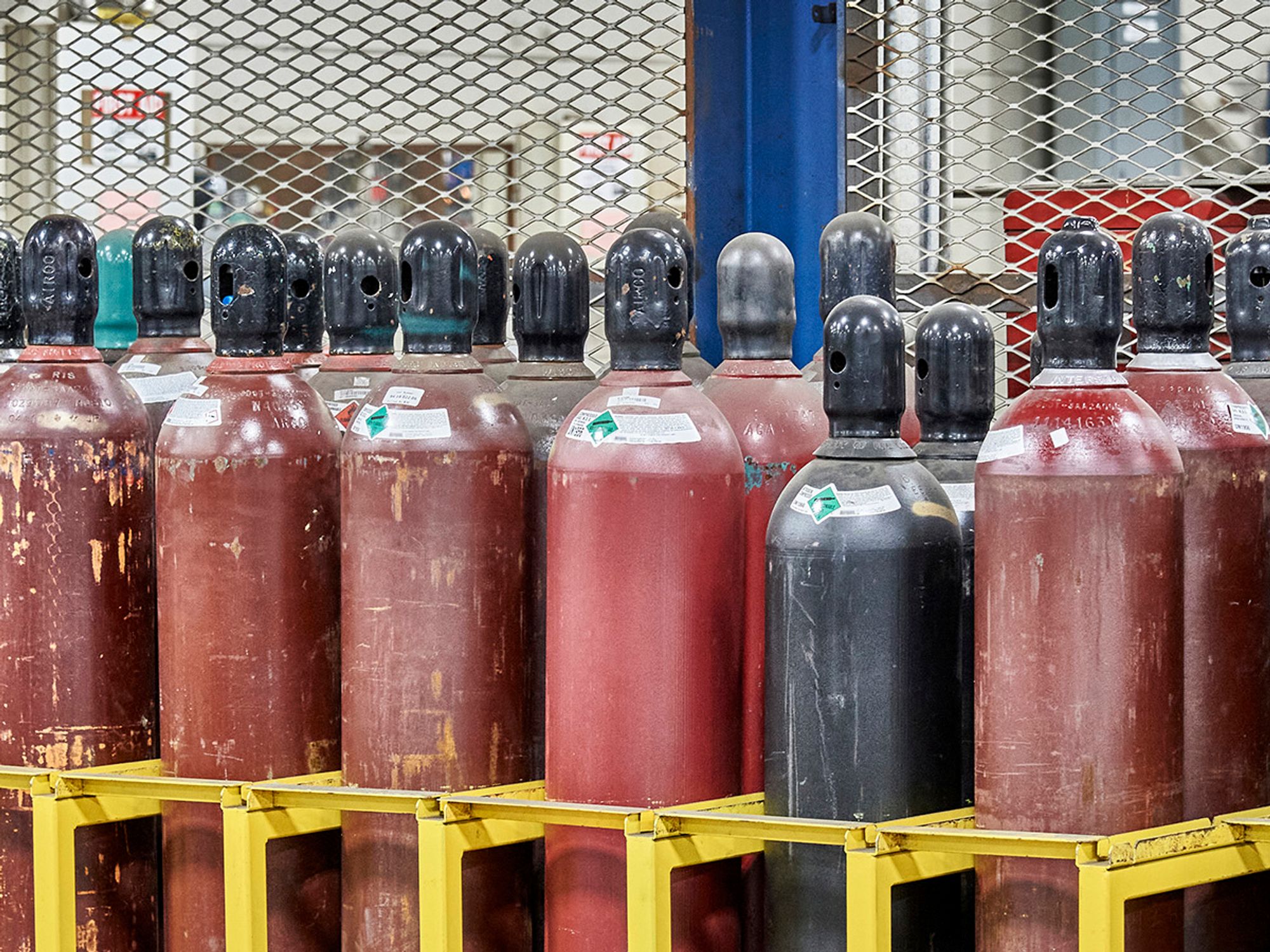InstituteHot WorkWelding and CuttingFocus AreaEnglishAnalysisIn Depth Sub Topics (Level 4)Welding and CuttingUSA
Transporting, moving, and storing compressed gas cylinders
['Welding and Cutting']

Employers must:
- Secure valve protection caps in place.
- Secure hoisted cylinders on a cradle, slingboard, or pallet. They must not be hoisted or transported by means of magnets or choker slings.
- Move cylinders by tilting and rolling them on their bottom edges. They must not be intentionally dropped, struck, or permitted to strike each other violently.
- When cylinders are transported by powered vehicles, secure them in a vertical position.
- Valve protection caps must not be used for lifting cylinders from one vertical position to another. Never use bars under valves or valve protection caps to pry cylinders loose when frozen. Use warm, not boiling, water to thaw cylinders loose.
- Unless cylinders are firmly secured on a special carrier intended for this purpose, regulators must be removed and valve protection caps put in place before cylinders are moved.
- Use a suitable cylinder truck, chain, or other steadying device to keep cylinders from being knocked over while in use.
- Close the cylinder valve when work is finished, when cylinders are empty, or when cylinders are moved.
- Secure compressed gas cylinders in an upright position at all times, except (if necessary) for short periods of time while cylinders are actually being hoisted or carried.
- Separate oxygen cylinders in storage from fuel-gas cylinders or combustible materials (especially oil or grease), a minimum distance of 20 feet or by a noncombustible barrier at least 5 feet high having a fire-resistance rating of at least one-half hour.
- Inside of buildings, store cylinders a well-protected, well-ventilated, dry location, at least 20 feet from highly combustible materials such as oil or excelsior. Cylinders should be stored in definitely assigned places away from elevators, stairs, or gangways. Assigned storage places must be located where cylinders will not be knocked over or damaged by passing or falling objects, or subject to tampering.
- The in-plant handling, storage, and utilization of all compressed gases in cylinders, portable tanks, rail tank cars, or motor vehicle cargo tanks must be in accordance with Compressed Gas Association Pamphlet P-1-1965.
